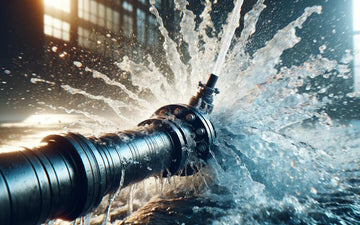The detection threshold for water sensors is a crucial concept for anyone involved in Industry QA. With the increasing complexity and sensitivity of water monitoring systems, understanding how these sensors function and their efficacy in real-time applications is paramount. These thresholds define the smallest amount of water that needs to come into contact with a sensor, triggering the system to alert users of a potential leak or overflow.

Understanding the Importance of Detection Thresholds
The detection threshold directly influences the response time of a system. Lowering the threshold means that even the slightest water presence is detected promptly, preventing potential water damage. For industries reliant on timely water management, selecting the right threshold is as much a science as it is a practical requirement. This is especially relevant in environments where environmental sensitivity is high, such as data centers or industrial facilities.
How Detection Thresholds Enhance Sensor Performance
Sensors with correctly calibrated detection thresholds can significantly improve operational efficiency and safety. By fine-tuning these thresholds, businesses ensure minimal false alarms and optimal energy utilization. This calibration impacts not only safety but also cost-effectiveness, since unnecessary alerts can lead to resource wastage. For a practical example, explore our water leak detection in apartments for more insights on application-specific thresholds.
The Science of Calibrating Detection Thresholds
Calibration involves aligning sensor sensitivity with expected water levels in specific environments. This process is critical for achieving a balance between responsiveness and reliability. The detection mechanism typically uses resistive, capacitive, or ultrasonic sensing techniques, each bringing unique advantages to water sensing applications. To dive deeper into the science behind these mechanisms, visit leak sensor accuracy guide.
Calibrating Detection Thresholds for Varied Environments
Different environments demand different detection threshold configurations. For instance, a threshold suitable for a residential setting may not necessarily apply to an industrial setup. It's essential for industry QA professionals to understand these nuances to avoid system inefficiencies that could lead to water damage or inefficient use of resources. A valuable resource for understanding environmental calibration can be found in our article on remote cabin leak protection.
Emerging Challenges in Detection Thresholds
As technology progresses, water sensors are becoming more sophisticated, yet they also face new challenges. For example, ensuring consistent detection thresholds across a variable range of environmental conditions presents a new frontier for engineers and QA professionals. Regular maintenance and updates to these systems are crucial to maintain their effectiveness amidst environmental and technological changes. Visit this tech talk on sensor technology for more information.

Frequently Asked Questions
1. What is the ideal detection threshold for residential water sensors?
The ideal threshold varies, but sensors must detect minor leaks swiftly to prevent damage while avoiding false alarms. Calibration tailored to a household's specific needs is recommended.
2. How does environmental change affect detection thresholds?
Environmental factors, such as humidity or temperature fluctuations, can affect the sensor's performance. Regular recalibration ensures consistent reliability and functionality.
3. Can water sensors work effectively in harsh industrial environments?
Yes, by adjusting the detection threshold and choosing appropriate sensor types, effective and reliable water detection can be achieved even in challenging industrial settings.






